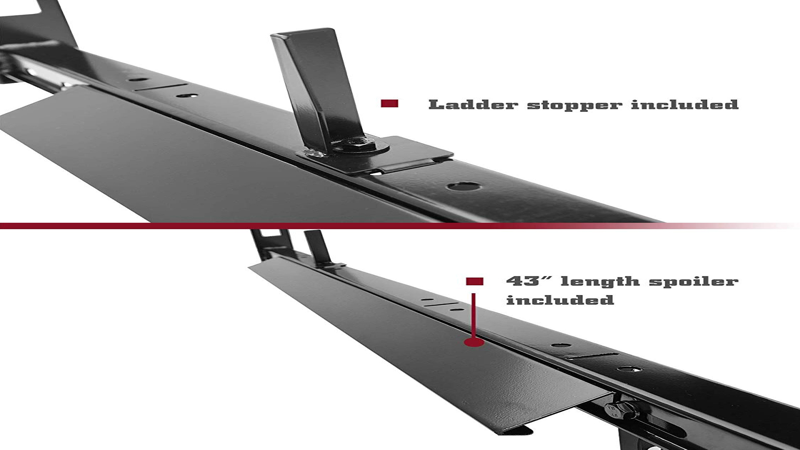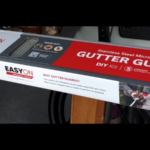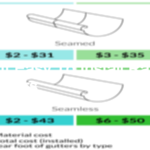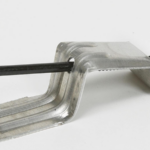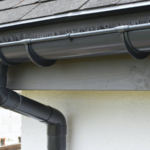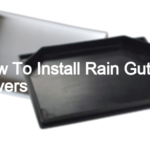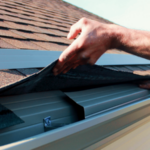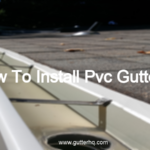- Cut the PVC rain gutters to the correct length using a saw.
- Install the PVC rain gutter brackets onto the fascia board at intervals of 24 inches using nails or screws.
- Affix the PVC rain gutters to the brackets using PVC rain gutter sealant.
- Drill holes into the PVC rain gutters at the corners and at intervals of 24 inches using a 1/8” drill bit.
- Run a PVC downspout from the gutter to the ground, and secure it in place with brackets.
- Repeat the process for the other side of the roof.
How do you install PVC gutters?
PVC gutters are a type of gutter system that is made from polyvinyl chloride, which is a type of plastic. PVC gutters are becoming a popular choice for many homeowners because they are durable and easy to maintain. Installing PVC gutters is not a difficult task, but there are a few things you need to know before you get started.
The first thing you need to do is measure the length of the area where you want to install the gutters. Once you have the measurements, you will need to cut the PVC gutters to size. You can use a saw or a power cutter to make the cuts.
Next, you need to install the hangers that will support the gutters. You can use either plastic or metal hangers. If you are using plastic hangers, you will need to drill pilot holes into the fascia board before screwing them into place. Metal hangers should be nailed into place.
Once the hangers are in place, you can start attaching the gutters to the hangers. Start at one end and work your way to the other. Use PVC glue or silicone caulk to seal the joints.
Finally, you need to install the downspouts. Cut the downspouts to size and attach them to the gutters using PVC glue or silicone caulk. Make sure the downspouts are pointing away from the foundation of the house to avoid flooding.
What screws to use for plastic gutters?
There are a variety of screws that can be used for plastic gutters, but the most common type is the hex head screw. These screws are designed to be driven into the material with a power drill, and they have a wide variety of head sizes and thread patterns to choose from. The most important thing to consider when selecting screws for plastic gutters is the length of the screw. The screw should be long enough to penetrate the material and reach the solid backing behind it, but it should not be so long that it protrudes through the other side of the gutter.
How do you use PVC pipe as gutter?
PVC pipe is a durable and inexpensive material that can be used for a variety of home improvement projects, including gutters. When used as gutters, PVC pipe can be cut to length and installed with standard gutter hangers. PVC pipe is also easy to clean and maintain, making it a good choice for gutters.
How many hangers for vinyl gutters?
It is recommended that you use hangers every 2 feet for your vinyl gutters. This will ensure that your gutters are properly supported and will not sag over time. While you can technically get away with using fewer hangers, it is not recommended as it could lead to problems down the road.
Do you nail or screw gutters?
There are a few factors to consider when deciding whether to nail or screw your gutters. The first is the type of gutter you have. If you have a plastic or aluminum gutter, you can use either nails or screws. If you have a wooden gutter, you’ll want to use screws so you don’t split the wood. The second factor is the type of roof you have. If you have a shingled roof, you’ll want to use screws so you don’t damage the shingles. The third factor is your personal preference. Some people prefer nails because they’re easier to install, while others prefer screws because they’re more secure.
Do gutters go over or under drip edge?
There are two schools of thought when it comes to installing gutters: over the drip edge or under the drip edge. Each method has its own set of pros and cons that you’ll need to weigh before making a decision.
Installing gutters over the drip edge is the more traditional method. The main advantage of this method is that it’s easier to install gutters this way. You won’t need to make any special cuts or adjustments, which can save you time and money.
The main disadvantage of installing gutters over the drip edge is that they’re more likely to leak. Water can seep behind the gutters and cause damage to your home’s fascia board. If you live in an area with a lot of wind or severe weather, your gutters may also be more likely to blow off if they’re not properly secured.
Installing gutters under the drip edge is a newer method that’s gaining popularity. The main advantage of this method is that it helps to prevent leaks. By installing the gutters under the drip edge, you create a barrier that stops water from seeping behind the gutters.
How do you seal PVC gutter joints?
- Start by cleaning the inside and outside of the PVC gutter joint with a rag. This will help the sealant to adhere better.
- Next, apply a thin bead of sealant to the joint. You can use a sealant specifically made for PVC, or a general purpose sealant like silicone or latex caulk.
- Use your finger or a putty knife to smooth out the sealant bead, making sure it’s evenly distributed.
- Allow the sealant to dry completely before using the gutter.
Last Word
Pvc rain gutters are a great addition to any home. They are easy to install and are very durable. They can help to protect your home from water damage and can also help to keep your home looking good.
